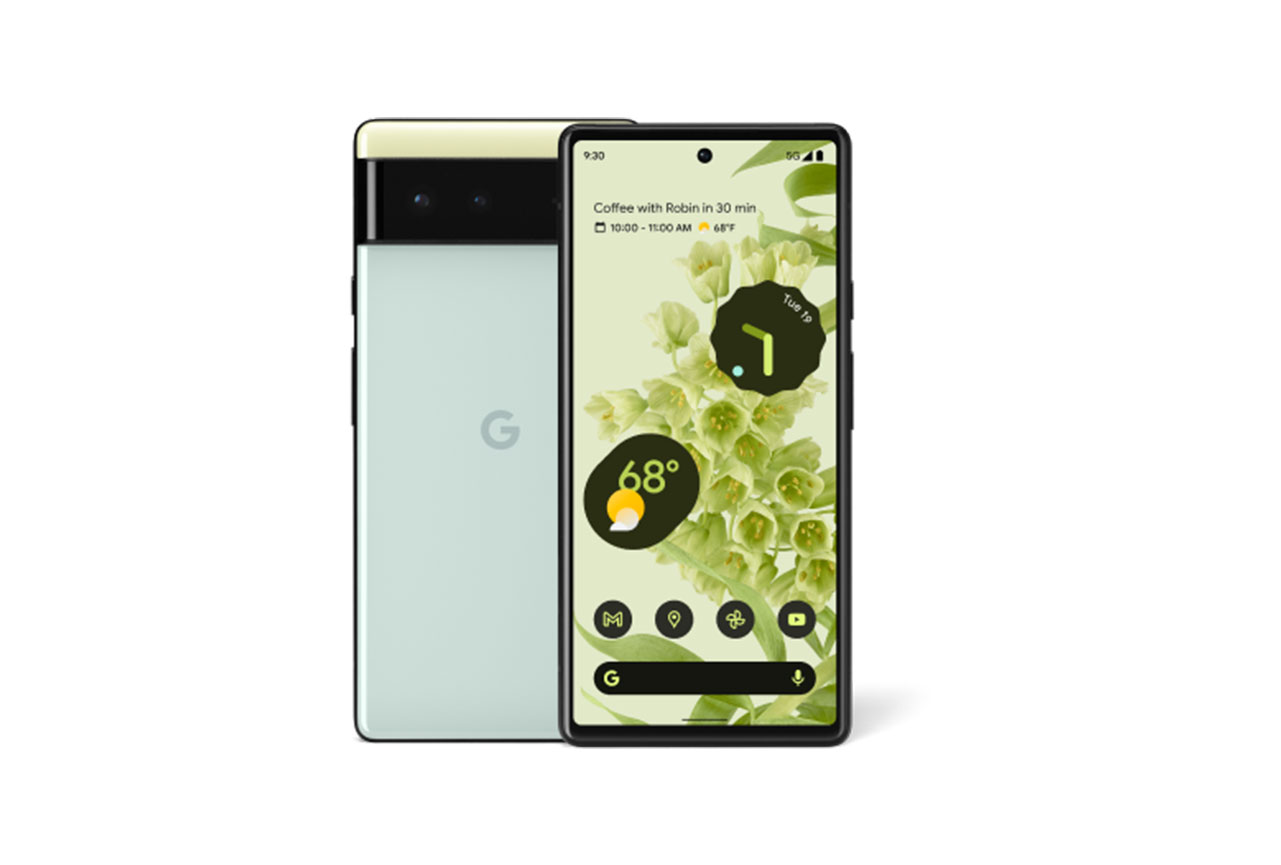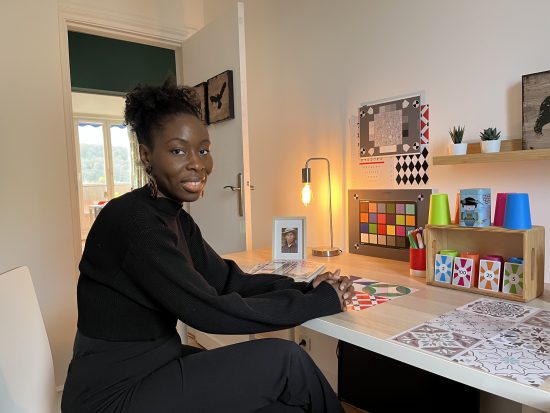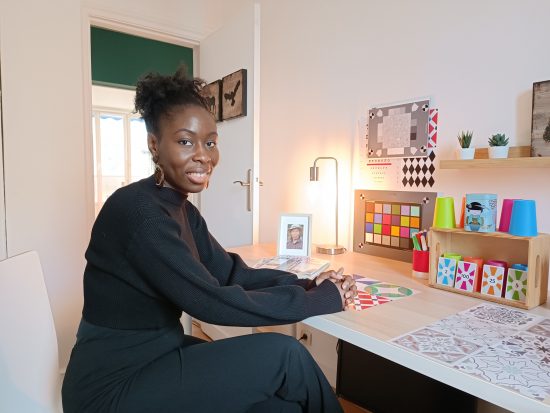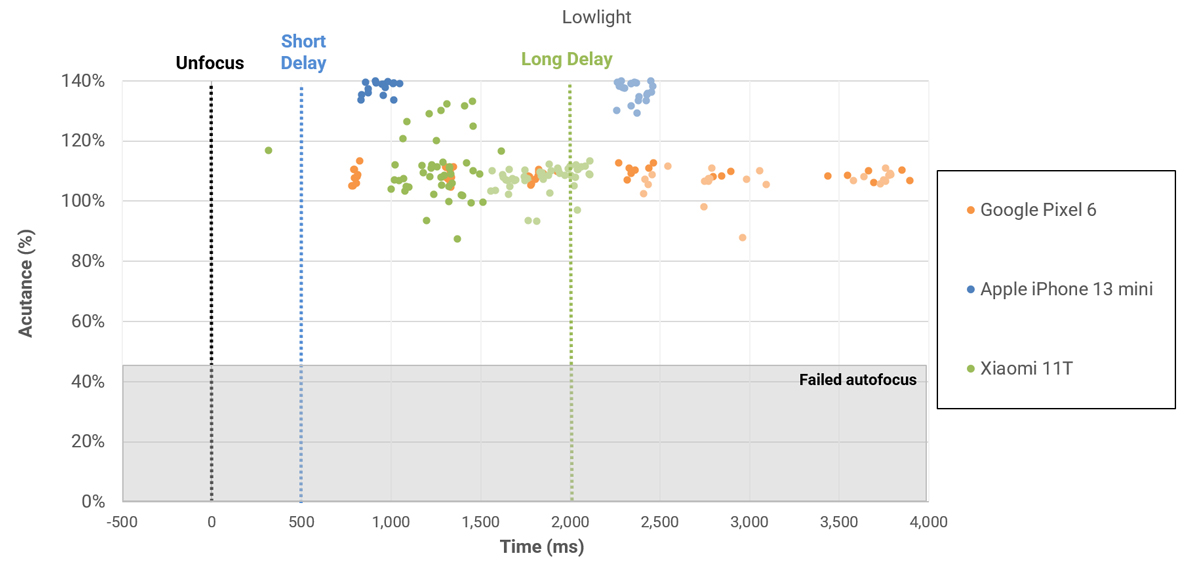Within Google’s Pixel line of smartphones, the Pixel 6 is the option for those users who prefer compact dimensions over maximum screen size. It’s powered by the same Tensor chipset as the Google Pixel 6 Pro but comes with a smaller 6.4-inch display and therefore as an overall smaller package. Other differences include less RAM (8 vs 12GB) and a smaller battery.
In the camera department the Pixel 6 lacks the Pro models dedicated tele camera but uses the same 50 MP primary module and 12.5 MP ultra-wide as the flagship model. Read our review to find out what that means for the Pixel 6’s performance in the DXOMARK Camera tests.
Key camera specifications:
- Primary: 50 MP 1/1.31″ sensor, 1.2µm pixels, 24 mm equivalent f/1.85-aperture lens, OIS, Dual PDAF
- Ultra-wide: 12.5 MP 1/2.86″ sensor, 1.25μm pixels, 16mm equivalent f/2.2-aperture lens
- LDAF (laser detection autofocus) sensor
- LED Flash
- 4K at 30/60fps (4K/30fps tested)
About DXOMARK Camera tests: For scoring and analysis in our smartphone camera reviews, DXOMARK engineers capture and evaluate over 3000 test images and more than 2.5 hours of video both in controlled lab environments and in natural indoor and outdoor scenes, using the camera’s default settings. This article is designed to highlight the most important results of our testing. For more information about the DXOMARK Camera test protocol, click here. More details on how we score smartphone cameras are available here.
Test summary
Scoring
Sub-scores and attributes included in the calculations of the global score.
 Google Pixel 6
Google Pixel 6

126
camera
110
Huawei Pura 70 Ultra
Best: Huawei Pura 70 Ultra (130)
112
Apple iPhone 16 Pro
Best: Apple iPhone 16 Pro (130)
100
Huawei Pura 70 Ultra
Best: Huawei Pura 70 Ultra (125)
97
Xiaomi 15 Ultra
Best: Xiaomi 15 Ultra (125)
95
Huawei Pura 70 Ultra
Best: Huawei Pura 70 Ultra (117)
81
Xiaomi Redmi 12 5G
Best: Xiaomi Redmi 12 5G (82)
65
Huawei Pura 70 Ultra
Best: Huawei Pura 70 Ultra (85)
65
Apple iPhone 16 Pro
Best: Apple iPhone 16 Pro (93)
60
Xiaomi 15 Ultra
Best: Xiaomi 15 Ultra (128)
60
Huawei Pura 70 Ultra
Best: Huawei Pura 70 Ultra (122)
99
Oppo Find X8 Pro
Best: Oppo Find X8 Pro (116)
105
Oppo Find X8 Pro
Best: Oppo Find X8 Pro (120)
105
Huawei Pura 70 Ultra
Best: Huawei Pura 70 Ultra (120)
106
Oppo Find X6 Pro
Best: Oppo Find X6 Pro (118)
105
Apple iPhone 16 Pro
Best: Apple iPhone 16 Pro (120)
77
Xiaomi 12S Ultra
Best: Xiaomi 12S Ultra (86)
114
Apple iPhone 16 Pro
Best: Apple iPhone 16 Pro (119)
Use cases & Conditions
Use case scores indicate the product performance in specific situations. They are not included in the overall score calculations.
Outdoor
Photos & videos shot in bright light conditions (≥1000 lux)
Indoor
Photos & videos shot in good lighting conditions (≥100lux)
Lowlight
Photos & videos shot in low lighting conditions (<100 lux)
Friends & Family
Portrait and group photo & videos
Please be aware that beyond this point, we have not modified the initial test results. While data and products remain fully comparable, you might encounter mentions and references to the previous scores.
Position in Global Ranking

88
th
4. Apple iPhone 16 Pro Max
157
10. Apple iPhone 15 Pro Max
154
22. Honor Magic4 Ultimate
147
26. Apple iPhone 14 Pro Max
146
26. Motorola Edge 50 Ultra
146
26. Samsung Galaxy S25 Ultra
146
32. Samsung Galaxy S24 Ultra
144
34. Apple iPhone 13 Pro Max
141
34. Google Pixel 9 Pro Fold
141
38. Samsung Galaxy S23 Ultra
140
43. Tecno Camon 40 Pro 5G
138
45. Vivo X80 Pro (Snapdragon)
137
52. Samsung Galaxy S22 Ultra (Snapdragon)
135
52. Vivo X80 Pro (MediaTek)
135
59. Samsung Galaxy Z Fold6
133
59. Samsung Galaxy S24+ (Exynos)
133
59. Samsung Galaxy S24 FE
133
59. Samsung Galaxy S24 (Exynos)
133
69. Samsung Galaxy Z Flip6
132
70. Apple iPhone 12 Pro Max
131
70. Samsung Galaxy S22 Ultra (Exynos)
131
81. Samsung Galaxy Z Fold5
128
83. Asus Smartphone for Snapdragon Insiders
127
83. Samsung Galaxy Z Flip5
127
83. Samsung Galaxy S23 FE
127
88. Vivo X70 Pro (MediaTek)
126
92. Asus Zenfone 11 Ultra
125
92. Samsung Galaxy S22+ (Exynos)
125
97. Samsung Galaxy Z Fold4
124
100. Apple iPhone 11 Pro Max
122
105. Xiaomi Redmi Note 13 Pro Plus 5G
121
106. Samsung Galaxy Z Fold3 5G
120
106. Samsung Galaxy S22 (Exynos)
120
106. Xiaomi Redmi Note 13 Pro 5G
120
111. Xiaomi Redmi Note 14 Pro+ 5G
118
114. Apple iPhone 12 mini
117
114. Samsung Galaxy S21 Ultra 5G (Snapdragon)
117
114. Samsung Galaxy S21 FE 5G (Snapdragon)
117
114. Samsung Galaxy S21 5G (Snapdragon)
117
120. Vivo X60 Pro 5G (Snapdragon)
116
123. Motorola Edge 50 Neo
115
123. Samsung Galaxy S21+ 5G (Snapdragon)
115
123. Samsung Galaxy S21 Ultra 5G (Exynos)
115
133. Crosscall Stellar-X5
113
133. Xiaomi Redmi Note 12 Pro+ 5G
113
137. Samsung Galaxy Z Flip4
112
139. Samsung Galaxy Z Flip3 5G
111
139. Samsung Galaxy S21+ 5G (Exynos)
111
139. Samsung Galaxy S21 5G (Exynos)
111
144. Samsung Galaxy A55 5G
108
144. Vivo X60 Pro 5G (Exynos)
108
149. Samsung Galaxy A54 5G
107
150. Xiaomi Redmi Note 14 Pro 5G
106
153. Samsung Galaxy A35 5G
104
154. Motorola Edge 40 Neo
103
154. Xiaomi Redmi Note 14 5G
103
156. Xiaomi Redmi Note 12 Pro 5G
102
158. Motorola Edge 30 Pro
101
160. Apple iPhone SE (2022)
100
162. Motorola Moto g75 5G
96
168. Samsung Galaxy A34 5G
92
168. Samsung Galaxy A25 5G
92
172. Xiaomi Redmi Note 13 5G
91
174. Motorola Moto g85 5G
88
174. Samsung Galaxy A52s 5G
88
174. Samsung Galaxy A52 5G
88
178. Motorola moto g54 5G
85
178. Samsung Galaxy A33 5G
85
178. Samsung Galaxy A16 LTE
85
181. Honor Magic6 Lite (5300 mAh)
84
181. Xiaomi Redmi Note 14
84
184. Samsung Galaxy A15 5G
83
186. Samsung Galaxy A15 LTE
81
187. Samsung Galaxy A53 5G
79
189. Xiaomi Redmi Note 11 Pro 5G
78
191. Samsung Galaxy A16 5G
77
193. Motorola Moto G35 5G
75
193. Xiaomi Redmi Note 13
75
196. Honor Magic5 Lite 5G
74
198. Samsung Galaxy A23 5G
70
199. Xiaomi Redmi Note 12 5G
69
202. Motorola moto g34 5G
67
202. Samsung Galaxy A14 5G
67
204. Motorola Moto G62 5G
66
205. Xiaomi Redmi Note 11S 5G
65
207. Xiaomi Redmi Note 12
63
212. Honor Magic4 Lite 5G
61
214. Xiaomi Redmi Note 11
60
216. Crosscall Stellar-M6
59
223. Xiaomi Redmi 10 2022
51
225. Samsung Galaxy A22 5G
48
Position in High-End Ranking

7
th
10. Xiaomi Redmi Note 13 Pro Plus 5G
121
11. Xiaomi Redmi Note 14 Pro+ 5G
118
16. Xiaomi Redmi Note 12 Pro+ 5G
113
19. Samsung Galaxy A55 5G
108
20. Samsung Galaxy A54 5G
107
21. Apple iPhone SE (2022)
100
27. Samsung Galaxy A52s 5G
88
27. Samsung Galaxy A52 5G
88
29. Samsung Galaxy A53 5G
79
Pros
- Good detail in bright light and indoors
- Nice and accurate color
- Natural detail and good shadow detail
- Fast and consistent autofocus in bright light and indoors
- Good detail in close and mid range tele shots
- Good video stabilization
- Good detail in video
- Accurate video exposure and dynamic range
Cons
- Noise in all conditions, especially in the shadows
- Lack of detail in low light
- Lack of detail in long range tele shots
- Bokeh effect not visible in preview
- Unstable color in video
- Noise in video, especially indoors and in low light
- Occasionally unstable video autofocus in low light
- Video artifacts including aliasing, flickering and judder
Pixel 6 images provide natural color and good detail. Thanks to
the primary camera’s large sensor, close-up portraits,
such as this sample, offer a (slight) natural bokeh effect.
With a DXOMARK Camera score of 132, the Google Pixel 6 secures a position just outside the top ten in our overall Camera ranking — an outstanding performance at this price point, which also means the Google phone is the lone leader in the High-End segment ($400 to $599) and currently the best option for mobile photographers who prefer smaller devices.
In this slightly difficult indoor scene, the Pixel 6 does very well, offering nice contrast, good fine detail on the subject, and overall natural white balance and color. Some noise is visible in the shadows, though.
Google Pixel 6, natural contrast and color, high level of detail, but some shadow noise
Apple iPhone 13 mini, similar dynamic range as the Pixel, slightly yellow white
balance, good detail but some
luminance noise
Xiaomi 11T, some highlight
clipping, slightly pink-ish white balance, slight shadow noise
When shooting still images the camera delivers excellent exposure and contrast as well as portrait color and skin tones, and shows no major shortcomings in any test areas. Target exposure is accurate most of the time, only in difficult backlit scenes can images sometimes be a little too dark, and good contrast is maintained at all times. The autofocus is fast and reliable in most situations, but we did notice some failures in low light.
Texture comparison in low light (5 lux), handheld: in low light the autofocus is not consistent and it can take a moment to capture the image. The subject is usually in focus, though.
The relatively large image sensor of the primary camera provides a natural bokeh that works well for portrait shots at short distances, but on the downside, people or objects located at the back of multi-plane scenes can be out of focus. Color fringing and aliasing are often visible, but most other unwanted image artifacts are very well under control.
The preview image on the display generally gives you a very good idea of the final capture and zooming is very smooth but the bokeh effect in portrait mode is not simulated at all, you’ll only see it after capture.
Preview image on display: no bokeh simulation
Google Pixel 6, bokeh simulation
Google Pixel 6, crop: bokeh images show good detail but some depth estimation artifacts are noticeable
When using the Pixel 6’s ultra-wide and tele cameras to zoom out or in, target exposure is accurate at all zoom settings. The field of view of the ultra-wide is not the widest that we have seen, though, and the lack of a dedicated tele lens means that images captured at long tele settings lack detail.
Google Pixel 6, long range tele
Google Pixel 6, crop: limited detail at long range
In video mode the Pixel provides effective stabilization in all conditions, resulting in stable and smooth footage. Exposure tends to be on the bright side, with a wide dynamic range, capturing good detail in both highlight and shadow areas. Detail is good in videos, too. On the downside, white balance and exposure can be a little unstable under changing light conditions and most clips show some noise, especially when recording under typical indoor lighting or in low light. In low light, our testers also observed some autofocus instabilities; some video artifacts, including aliasing, flickering, and judder effects, were also noticeable.
Google Pixel 6, good exposure and stabilization but white balance instabilities
Apple iPhone 13 mini, good exposure and stabilization, no white balance instabilities
Xiaomi 11T, good exposure, slight AF and white balance instabilities, moving texture artifacts


 88th
88th 7th
7th




DXOMARK encourages its readers to share comments on the articles. To read or post comments, Disqus cookies are required. Change your Cookies Preferences and read more about our Comment Policy.